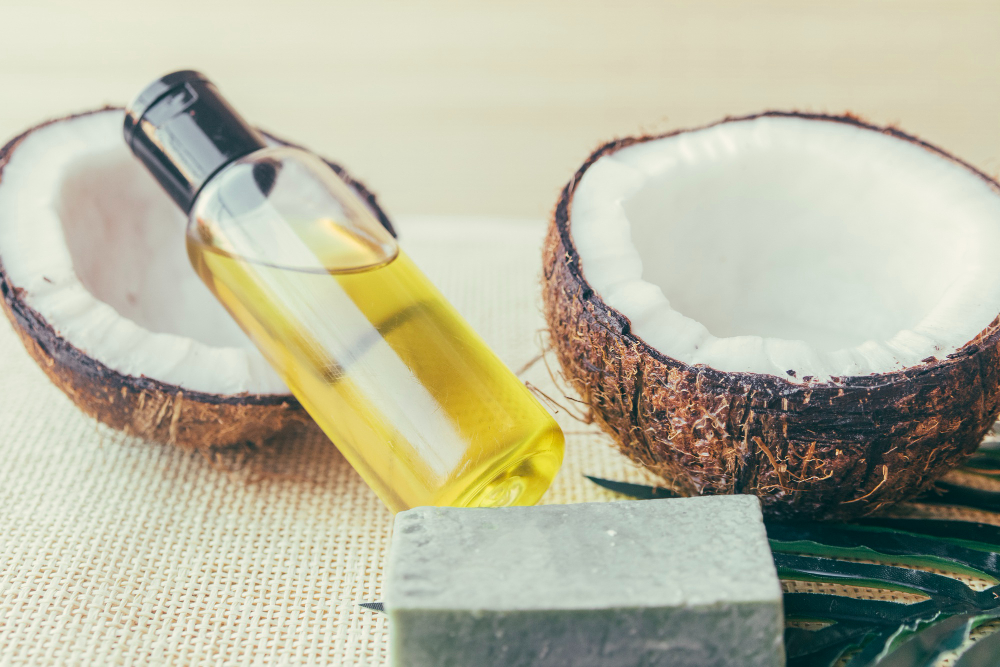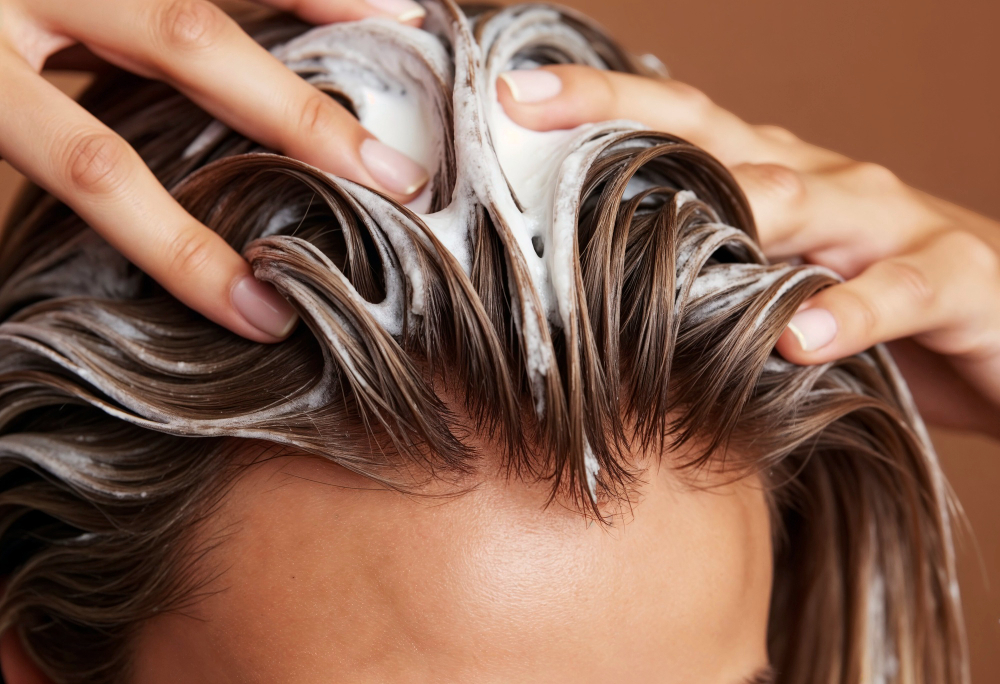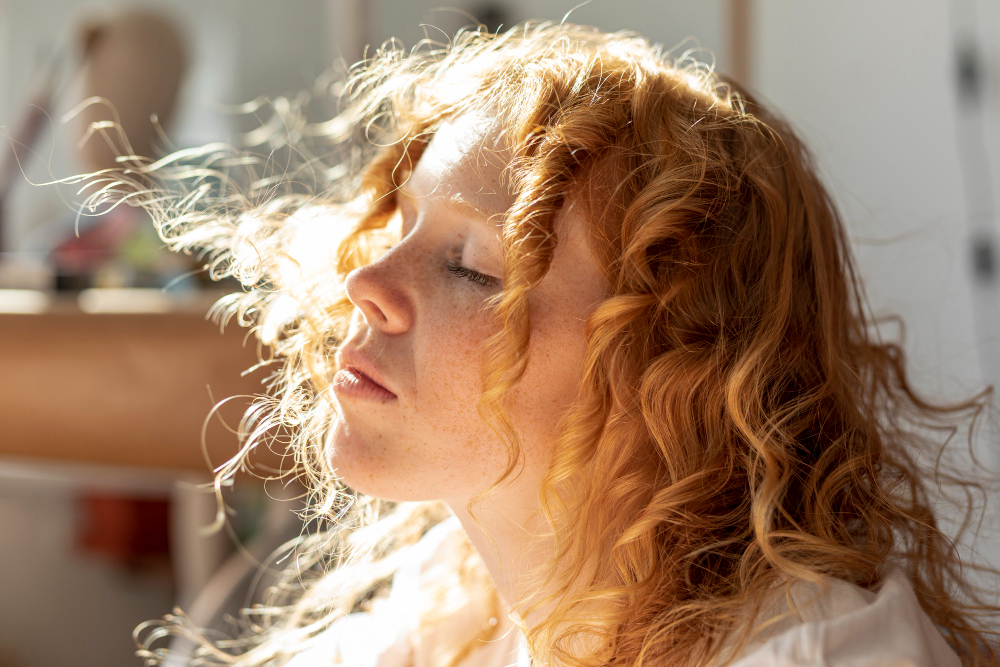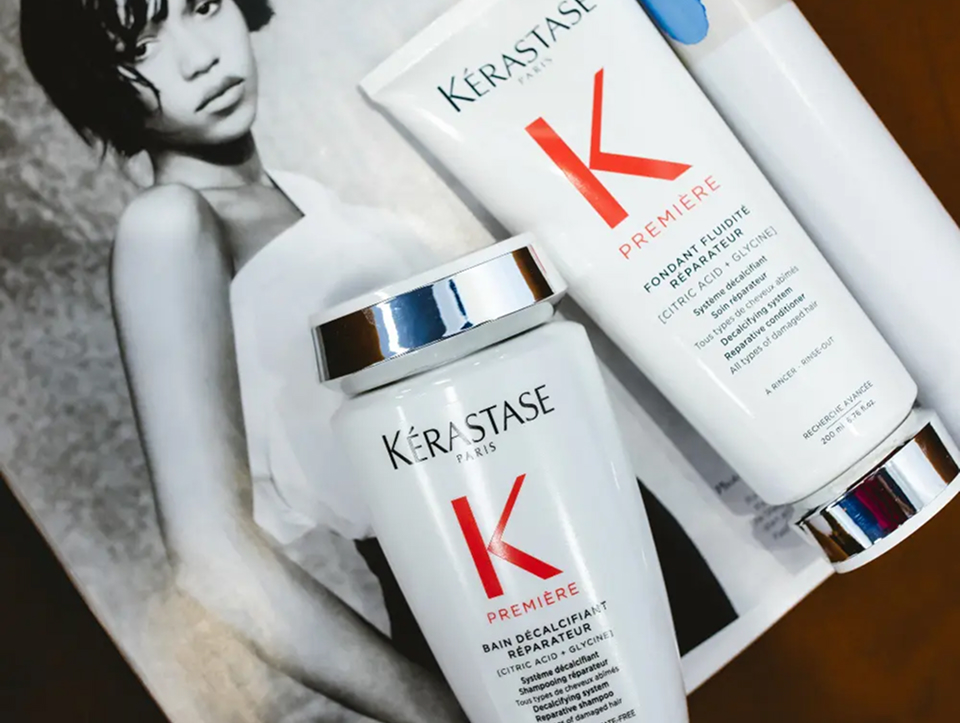Let’s be real, keeping your hair moisturized can sometimes feel like a full-time job. Between seasonal dryness, product build-up, and the constant battle with frizz, your strands go through a lot, especially if you have textured, curly, or high-porosity hair.
Note: This guide is about the LOC moisturizing method (Liquid–Oil–Cream), not about starting or locking dreadlocks.
That’s why the LOC method hair routine has become a go-to technique for many.
But here in 2025, with new formulas, personalized routines, and ingredient science evolving fast, you might be wondering: Is the LOC method still worth doing? Or is it time to switch things up?
At Haste Urban Hair Spa, we help clients figure out what works based on their hair porosity, texture, and lifestyle, not trends.
In this guide, you’ll learn what the LOC method hair routine is, how it compares to the LCO method, when to use it (or not), and how to make it work for your unique hair in 2025.
Because when your hair stays moisturized, everything else works.
What Is the LOC Method Hair Routine?

The LOC method hair routine is a moisture layering technique that stands for Liquid, Oil, and Cream.
Until today, it remains effective for high-porosity hair, which absorbs water easily but loses it quickly. The layering helps lock in moisture.
We still recommend it for dry, damaged, or frizz-prone hair.
Here is how it works:
- Liquid (L): This step usually involves water or a water-based leave-in conditioner to hydrate the hair.
- Oil (O): Oil helps lock in that initial moisture and prevent it from evaporating.
- Cream (C): The final layer is a cream-based product that smooths, seals, and defines.
Simple. But the magic lies in how these layers work together. But who created the LOC Method?
The LOC Method Hair Routine was coined by Rochelle Alikay Graham‑Campbell, founder of Alikay Naturals and creator of the BlackOnyx77 YouTube channel.
LOC vs LCO Method: What’s the Difference?
One of the most common questions we get at the salon is, “Should I be using the LCO method instead?” And it’s a fair question.
The LCO method flips the last two steps, Liquid, Cream, and then Oil. So which one’s better?
The answer depends on your hair’s porosity, density, and texture:
- If your hair absorbs moisture and dries out quickly (typically high porosity), the LOC method may serve you best. Applying oil second acts as a moisture seal, while the cream helps define and smooth.
- If your hair has lower porosity and struggles to absorb oils, the LCO method hair routine may feel lighter and less greasy. The cream hydrates and defines, and the oil acts more like a finishing seal.
💡 Tip: Many people search for the best routine between the LOC and LCO methods, and the difference mostly comes down to porosity.
The key is to experiment and look at your hair. In some cases, you may rotate between the two depending on the season or how your hair feels that week.
Here’s a side-by-side breakdown:
| Feature | LOC Method (Liquid → Oil → Cream) | LCO Method (Liquid → Cream → Oil) |
| Best For | High-porosity, dry, or tightly coiled hair | Low-porosity, fine, or buildup-prone hair |
| Moisture Retention | Oil seals in the initial hydration are long-lasting | Cream hydrates and softens before sealing with oil |
| Product Absorption | May feel heavier; good for hair that absorbs moisture quickly | Lighter finish; better for hair that repels product easily |
| Final Feel | Thicker, creamier finish; more definition and weight | Softer, lighter feel; more volume and bounce |
| Frizz Control | Excellent for frizz-prone textures | Suitable for moderate frizz control with less buildup |
| Styling Compatibility | Great for twist-outs, braid-outs, and protective styles | Ideal for wash-and-gos and stretched styles |
| Suitable for moderate frizz control with less build-up | Higher if using heavy oils or thick creams | Lower, especially when paired with lightweight products |
💡 Still not sure which one to try? Start with LCO if your hair tends to be easily weighed down. Choose the LOC method hair routine if moisture tends to disappear quickly and frizz is your biggest concern.
Why the LOC Method Became a Go-To Moisture Technique

The LOC hair technique isn’t just a trend; it’s become a staple because it works for many people, especially those with textured hair. Here’s why it has become a favorite method:
- Customizable to different hair types.
- Builds a consistent moisture routine.
- Reduces frizz and increases manageability.
- Perfect for natural, transitioning, or protective styles.
Plus, when paired with regular deep hydration treatments and the right leave-in conditioner, it can transform dry or brittle hair over time.
✂️ If you’re new to the method or feel like your hair needs a reset, we recommend scheduling a hydration treatment at Haste to prep your strands for better product absorption.
👉 Do you think hyaluronic acid is only hype? Learn more about HA and how it helps to moisturize your hair and scalp here.
Best Products for the LOC Method (2025)
- Liquid: Water-based leave-in conditioners or curl refreshers ([example product link])
- Oil: Jojoba, argan, or grapeseed oil for lightweight hydration; castor or avocado oil for high-porosity hair
- Cream: Moisturizing cream or buttercream for sealing and curl definition
✍️ Learn more about hair damage repair
Why the LOC Method Still Works in 2025
Short answer: Absolutely, but with a few updates.
While the LOC method hair routine remains relevant, we’re seeing more clients adapt it to their routines rather than adhering to a rigid step-by-step formula.
Today’s hair care is more personalized and ingredient-conscious, and that’s a good thing.
- Ingredient creation: Newer leave-ins and creams are more hydrating and multitasking, sometimes reducing the need for multiple steps.
- Porosity-first thinking: Many people now tailor their moisture routine based on porosity rather than just curl pattern.
- Minimalist routines: Some hair types may not require all three steps daily. The LOC method for hair can now be seen more as a flexible guideline than a rulebook.
Yes, the LOC method still counts, but it shines when adapted to your hair’s specific needs. But did you know that knowing how to oil your hair is also part of the LOC method? Learn how to apply hair oil to your hair in our article here.
Science Backs Hydration Strategies

Coconut Oil vs. Mineral Oil
A PubMed-backed study using SIMS (Secondary Ion Mass Spectrometry) found that coconut oil penetrates the hair shaft, while mineral oil does not, because of coconut oil’s polarity and protein affinity. Penetrating oils reduce hygral fatigue by minimizing swelling/shrinkage cycles.
Moisture Retention in High-Porosity Hair
Research shows coconut and polyunsaturated oils help fortify strands and reduce moisture loss in high-porosity hair.
Elasticity Loss with Dehydration
A scientific hair biology blog explains how dehydration reduces hair elasticity, thereby increasing breakage risk, and highlights the importance of moisture retention strategies, such as LOC layering.
Pro Tips to Follow the LOC Method
- Start by warming or steaming your hair before applying the liquid to open the cuticle and improve absorption.
- Then squish to condish after your leave-in to enhance clumping and lock in moisture.
- Rotate your LOC and LCO by season by using the LOC in winter and the LCO in summer.
- For low-porosity hair, avoid heavy oils like castor oil and use lighter oils like avocado, jojoba, and argan.
- For a mid-week refresher, use leave-in creams instead of re-layering oil to prevent scalp build-up.
Modern Routine Tweaks
- Use lighter oils (such as jojoba or grapeseed) when heavier options weigh hair down.
- Choose cream-like gels or butter-creams with moisturizing polymers.
- Incorporate gels that hydrate gradually as humidity changes.
Ensure that you follow a wash routine: pre-poo, cleansing, and deep conditioner. These set the foundation for adequate layering.
How to Measure Success

If your routine is effective, expect:
- Hair that remains soft and elastic days after styling
- Clumped curls, minimal frizz, and stronger strands
- Easier styling sessions with fewer products
- Fewer split ends and less breakage overall.
If you don’t see these improvements, consider tweaking your products or getting expert moisture recommendations from our stylists.
LOC Is Still Relevant, But Personalization Is Key
The LOC Method is far from obsolete; it’s a scientifically supported, customizable hydration strategy rooted in porosity-based care. In 2025, it’s more powerful when adapted to lighter, more innovative products and flexible routines that respond to your hair’s changing needs.
✂️ Ready to level up your moisture routine with personalized product guidance or salon care?
Book a Consultation with our Haste Stylists.
FAQ
Is the LOC method only for curly or coily hair?
No hair prone to dryness, frizz, or breakage can benefit, including wavy or straight textures.
Can I switch between LOC and LCO?
Seasonal change, water quality, or hormonal shifts may make one better than the other at different times.
Can I apply the LOC method daily?
Not recommended. Use on wash days; refresh lightly midweek with mostly water-based products.
What if my hair still feels dry after using LOC?
Try a deep hydration or protein treatment. Also, ensure your liquid step truly hydrates—not just with oils/butters.
Can I use gels or stylers in LOC?
Yes, most gels can follow or replace the cream step (if moisturizing). Just ensure product compatibility to avoid flaking or build-up.
Which products work best for each step?
L: Water-based leave-in conditioners or curl refreshers
O: Jojoba, argan, grapeseed (light); castor or avocado (dense/high-porosity)
C: Moisturizing cream or butter-creams—choose based on desired softness or hold









